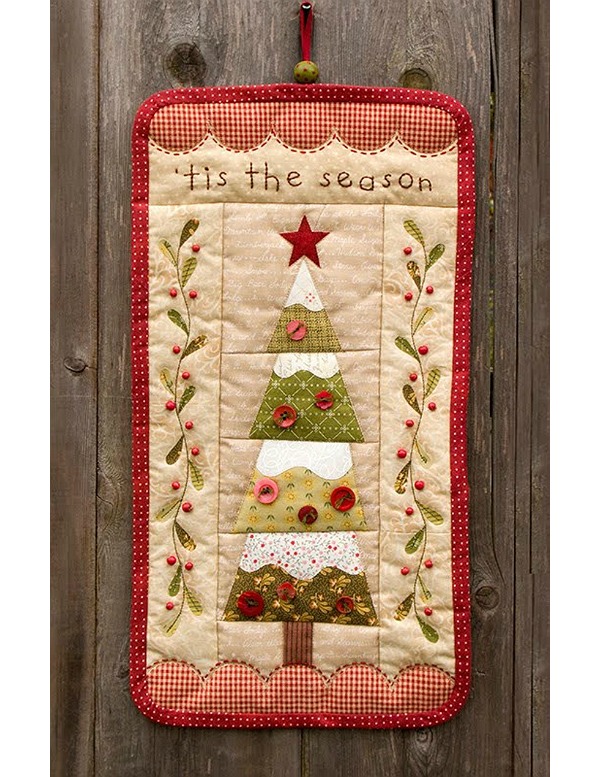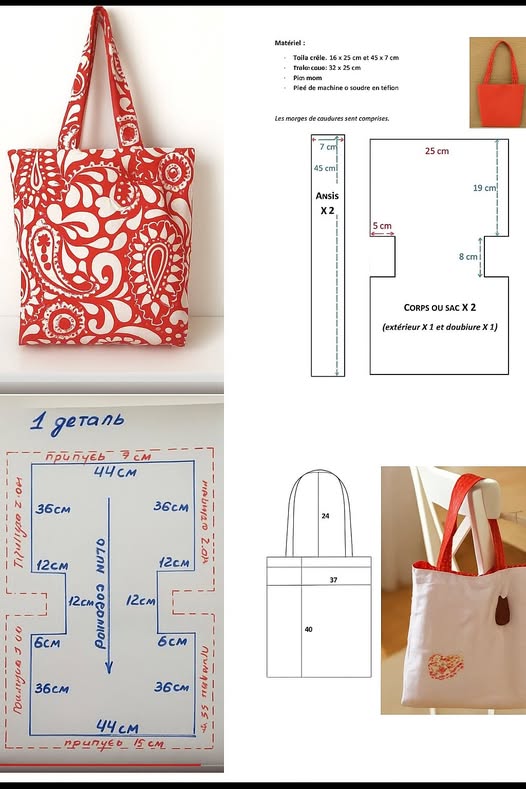

Sewing Beautiful Bag Pattern is a wonderful way to express creativity, learn valuable skills, and design something truly personal.
The art of sewing gives you the freedom to choose the fabric, color, and shape of your bag, turning a simple piece of cloth into a unique fashion statement.
Whether you are a beginner learning the basics or an experienced seamstress looking for new inspiration, understanding how to work with a bag sewing pattern can open endless possibilities for crafting functional and beautiful accessories.

Creating a beautiful bag pattern is not just about stitching pieces together; it’s about combining design, functionality, and craftsmanship.
Each part of the bag — from the handle to the lining — has its purpose and contributes to the final look. By following a well-structured pattern, even someone new to sewing can achieve professional-quality results. Sewing bags allows you to control every detail, from pocket placement to zipper style, ensuring your finished product reflects your personal taste.
For those who love handmade items, learning how to sew a bag pattern can be both relaxing and rewarding. You get to transform ordinary fabrics into something useful and stylish, often at a fraction of the cost of store-bought bags. Beyond the savings, it’s a sustainable practice, encouraging creativity and reducing waste. Once you understand how to read patterns, measure fabric, and apply the right techniques, making your own bags can become a lifelong hobby filled with joy and satisfaction.
To master the art of sewing beautiful bag patterns, it’s essential to start with the basics. A sewing pattern acts as a blueprint, showing you exactly where to cut, fold, and stitch. Patterns typically include pieces for the outer fabric, lining, straps, and pockets. Learning to interpret pattern symbols, seam allowances, and notches ensures accuracy and consistency in your final product.
Choosing the right fabric and materials is also key. Cotton canvas, denim, faux leather, and linen are excellent options depending on the bag’s purpose. A tote bag may require a durable canvas, while a small purse might look elegant in linen or satin. Reinforcements like interfacing or batting can help your bag maintain its shape and structure. Always pre-wash and iron your fabric before cutting to avoid shrinkage after sewing.
When cutting your fabric according to the bag pattern, precision is crucial. Lay the fabric flat and align the pattern pieces correctly with the grainline. Use fabric scissors or a rotary cutter for clean edges. Pins or fabric clips can hold the pattern in place to prevent movement during cutting. Label each piece to keep track of its purpose, especially when working with multiple pockets or panels.
The next step involves assembling the pieces according to the pattern’s instructions. Begin with smaller elements like pockets and zippers before joining the main body. This order helps maintain neat seams and allows you to correct mistakes early. Press each seam with an iron as you go — it may seem minor, but it gives your bag a polished, professional finish.
As you continue learning, experiment with decorative elements such as embroidery, appliqué, or fabric paint. These creative touches turn your sewing project into a personal masterpiece. You can even mix and match fabrics to create patterns that reflect your personality. Remember, every bag you make builds your skills and confidence.
Selecting the right bag pattern is the foundation of any successful project. There are countless designs available, ranging from simple tote bags to complex backpacks. Beginners should start with easy patterns featuring straight seams and minimal components, such as drawstring bags or basic totes. As your confidence grows, you can move on to structured handbags or messenger bags with zippers and compartments.
When browsing for sewing bag patterns, consider your lifestyle needs. If you travel frequently, a roomy weekender bag might be ideal. For everyday use, a medium-sized shoulder bag with inner pockets keeps essentials organized. Each pattern serves a different purpose, so align your project with your personal goals.
Another factor to evaluate is the skill level indicated on the pattern. Patterns are usually labeled as beginner, intermediate, or advanced. Starting with your appropriate level ensures success and prevents frustration. Even simple patterns can be modified later to include additional features like zippers, lining, or adjustable straps once you’re comfortable.
Think carefully about your fabric selection as it directly affects the final look. Patterns with structured shapes work best with thick fabrics like canvas, twill, or faux leather. Soft fabrics like cotton or linen give a more relaxed feel. Always choose complementary thread colors and durable accessories, such as metal rings and magnetic snaps, to enhance your project’s quality.
Don’t forget to review the pattern instructions before cutting. Some patterns provide optional variations or suggestions for customization. Reading the entire guide first can save time and fabric. Make notes or highlight areas that seem complex, and prepare your tools accordingly — scissors, sewing machine, needles, and thread.
Finally, consider building a small pattern collection. Keeping a few favorite designs lets you mix and match styles. You might use the body of one bag and the strap of another to create something truly original. Over time, you’ll develop your own signature bag style that stands out from store-bought versions.
The process of sewing a beautiful bag pattern follows a logical sequence that anyone can master with practice. Begin by preparing your fabric, cutting out all necessary pieces, and organizing them on your workspace. Having everything neatly arranged helps maintain focus and prevents confusion later in the process.
Start by constructing the smaller components first — pockets, zippers, or flaps. Attach these to the appropriate panels according to your pattern. Use precise stitching and reinforce the edges where stress is likely to occur. A well-sewn pocket can make your bag both stylish and functional.
Next, assemble the main body of the bag by joining the outer panels together. Pin the fabric right sides facing each other and sew along the seams. Once the outer structure is complete, repeat the same process for the lining. The lining gives your bag a neat interior finish and protects the fabric from wear.
When both the outer body and lining are ready, attach the straps or handles. Depending on your design, these can be sewn directly into the seams or added afterward. Make sure they’re securely stitched since they carry most of the bag’s weight. Adjustable straps add versatility, especially for shoulder or crossbody bags.
After assembling the main parts, join the lining and outer fabric. Place the lining inside the bag with right sides facing each other, then sew around the top edge. Leave a small gap to turn the bag right side out. Once done, press the top edge flat and stitch it closed neatly.
Finish by adding decorative details and final touches. Topstitch around the edges, attach magnetic closures, and add embellishments like buttons or labels. This final step transforms your project from a simple piece of fabric into a professionally finished, stylish accessory.
To make your bag sewing projects even better, follow some expert tips that can elevate your results. First, always use quality materials. Cheap thread or weak fabric can lead to uneven stitches or torn seams. Invest in strong, durable tools for the best outcomes.
Practice maintaining even seam allowances throughout your project. This small detail ensures symmetry and helps your bag look balanced. Use guides on your sewing machine or a seam gauge to maintain consistency. If mistakes happen, don’t rush — remove the stitches carefully and redo the section.
Ironing and pressing are underrated yet crucial steps. Pressing after each seam helps the bag hold its shape and makes stitching smoother. A well-pressed fabric is easier to handle and gives your bag a professional touch.
If you’re working with thick materials like canvas or denim, use specialized needles and heavy-duty thread. Standard needles might break or skip stitches. Adjust your sewing machine tension as needed for cleaner results.
Experiment with creative customization. Try adding lace, embroidery, or printed patches to personalize your design. You can even repurpose old clothing or scraps into new bag creations, giving your project an eco-friendly twist.
Lastly, remember that patience and practice are key. Each bag you sew teaches new skills. The more you create, the more confident and inventive you’ll become, turning sewing into both a passion and a practical craft.
1. What is the best fabric for sewing a bag pattern?
Cotton canvas, denim, faux leather, and linen are among the best fabrics. They offer durability and structure, making them ideal for different bag styles.
2. Can beginners sew a beautiful bag pattern?
Absolutely. Many beginner-friendly patterns are available, with simple instructions and minimal components. Start with easy designs like tote or drawstring bags.
3. What tools do I need for sewing a bag?
Essential tools include fabric scissors, measuring tape, pins or clips, sewing machine, needles, and matching thread. Optional tools like rotary cutters and seam rippers can also help.
4. How do I read a sewing pattern correctly?
Each pattern comes with symbols and guides showing how to cut and assemble the pieces. Take time to review the legend and instructions before starting.
5. How can I make my handmade bag look professional?
Use quality fabric, neat stitching, pressing after seams, and finishing details like topstitching or lining. These small touches elevate the final look.
6. Can I customize my bag pattern?
Yes! Modify pocket placements, add zippers, or mix fabrics. Customization makes each bag unique and showcases your personal creativity.
Mastering the art of sewing beautiful bag patterns combines creativity, patience, and skill. By understanding the basics, choosing the right materials, and practicing step by step, anyone can create a stunning, functional bag that reflects their individuality. Whether you’re sewing for fun, gifts, or small business, each project helps you grow as a maker.
We hope this article inspired you to start your next sewing adventure. If you’ve tried any bag patterns or have your own sewing tips, share your honest opinion and suggestions below — your experiences might inspire other crafters to create something beautiful too!